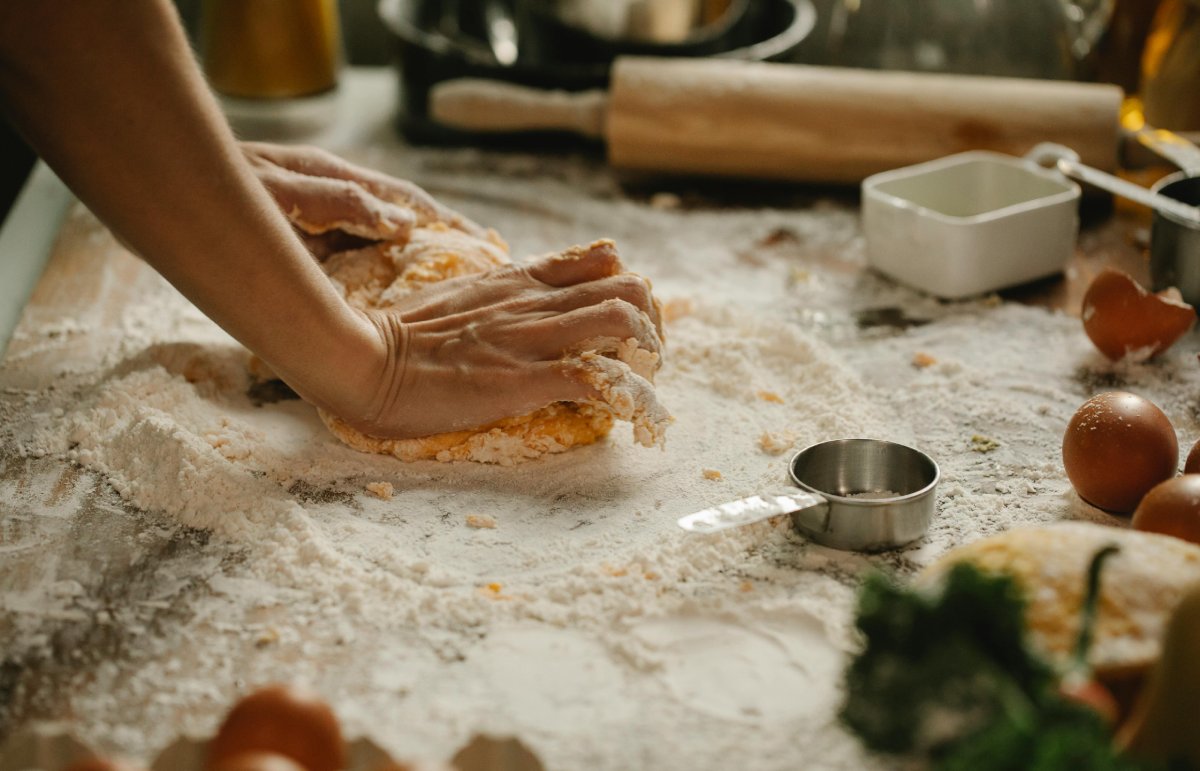22 Homemade Bread Techniques for Perfect Family Loaves
Baking bread at home is both an art and a science. These 22 techniques will help you achieve perfect loaves every time.
1. Use Fresh Ingredients

Ensure your yeast and flour are fresh. This helps the bread rise properly and taste great.
2. Measure Ingredients Accurately

Weigh your ingredients for the best results. Baking is a precise science.
3. Knead Properly

Knead the dough until it’s smooth and elastic. This develops the gluten for a good structure.
4. Use the Windowpane Test

Stretch a small piece of dough. If it forms a thin, translucent “window,” it’s ready.
5. Let It Rise Twice

Allow the dough to rise twice. This improves the texture and flavor.
6. Use a Proofing Basket

A proofing basket helps the dough keep its shape. It also adds a beautiful pattern to the crust.
7. Score the Dough

Slash the top of the dough before baking. This allows the bread to expand properly.
8. Use Steam

Create steam in the oven for a crispy crust. Place a pan of water in the oven or spray the dough with water.
9. Bake on a Stone

Use a baking stone for an even heat distribution. This helps achieve a crispy crust and a chewy interior.
10. Check the Temperature

Use a thermometer to check if the bread is done. The internal temperature should be around 190°F-200°F.
11. Cool Completely

Let the bread cool completely before slicing. This allows the crumb to set and improves the flavor.
12. Experiment with Flour

Try different types of flour for unique flavors and textures. Whole wheat, rye, and spelt are great options.
13. Use a Preferment

Make a preferment like a poolish or biga for better flavor. This adds depth to the bread.
14. Hydration Levels

Adjust the hydration level of your dough. Wetter dough can result in a more open crumb.
15. Autolyse Method

Mix flour and water and let it rest before adding yeast and salt. This helps develop gluten.
16. Use a Dutch Oven

Bake the bread in a Dutch oven for a perfect crust. The lid traps steam and creates a beautiful crust.
17. Long Fermentation

Let the dough ferment slowly in the fridge. This improves flavor and texture.
18. Add Seeds and Grains

Mix seeds and grains into the dough for added texture and flavor. Try flax, sunflower, and sesame seeds.
19. Control the Temperature

Keep an eye on the dough temperature. Warmer dough ferments faster; cooler dough ferments slower.
20. Use a Stand Mixer

A stand mixer can make kneading easier. It’s especially helpful for high-hydration doughs.
21. Practice Patience

Give the dough the time it needs to rise and develop. Rushing the process can result in dense bread.
22. Keep a Baking Journal

Record your recipes and techniques. This helps you track what works and what doesn’t for future baking.
Toxic Talk: 21 Phrases to Never Say to Your Kids

Are you worried about the impact of your words on your child’s well-being? Let’s tackle 21 phrases that might be causing more harm than you realize. Toxic Talk: 21 Phrases to Never Say to Your Kids
Breaking Ties: Recognizing When It’s Time to Go No-Contact with Parents

Deciding to go no-contact with a parent is a profound, often painful choice, but sometimes it’s necessary for personal well-being. Are you grappling with the decision to distance yourself from a toxic parental relationship? Breaking Ties: Recognizing When It’s Time to Go No-Contact with Parents
Stop the Stereotypes: 20 Gender-Based Comments Kids Don’t Need

It’s time to challenge traditional narratives that limit kids’ potential. Here are gender-specific phrases and ideas to avoid, fostering a supportive and open-minded environment for the next generation. Stop the Stereotypes: 20 Gender-Based Comments Kids Don’t Need
Reasons Your Adult Children May Be Pulling Away

Are you wondering why your grown-up kids seem to keep their distance? It might be a good time to look back and consider if some old parenting habits are to blame. Reasons Your Adult Children May Be Pulling Away
Want Happy Kids? Try These 15 Parenting Strategies

Parenting is both a privilege and a responsibility. Here are 15 research-backed strategies to help you raise happy children. Want Happy Kids? Try These 15 Parenting Strategies
The post 22 Homemade Bread Techniques for Perfect Family Loaves first appeared on Peachy Fours.
Featured Image Credit: Pexels / Klaus Nielsen.
For transparency, this content was partly developed with AI assistance and carefully curated by an experienced editor to be informative and ensure accuracy.







